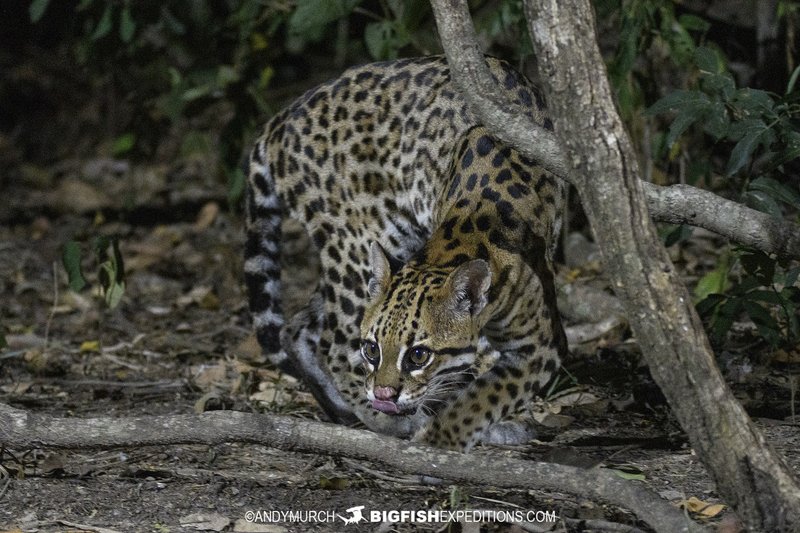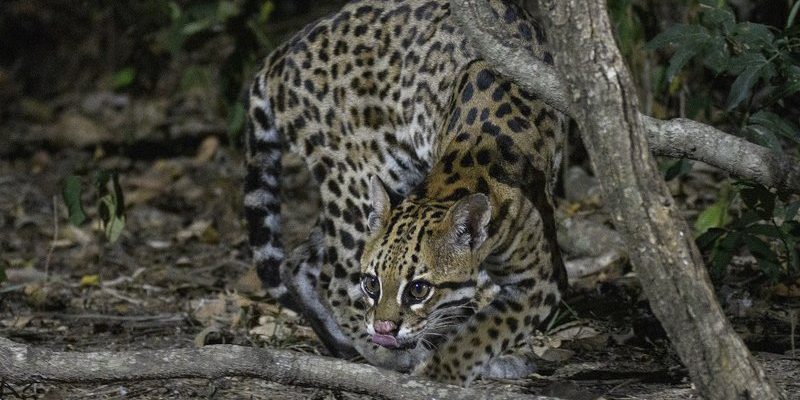
Let’s take a closer look at the best ways to handle an unexpected meeting with an ocelot. You might be wondering why this matters—after all, they’re just cats, right? Well, here’s the thing: ocelots are not your average house cat. They’re about the size of a small dog and have unique behaviors and needs. Understanding how to interact (or not) is crucial for your safety and the animal’s well-being.
Understanding Ocelots
Before we dive into what to do if you meet an ocelot, it’s worth getting to know this fascinating species. Ocelots are medium-sized wild cats found primarily in South and Central America, with a few living in southern Texas. They thrive in various habitats, from tropical forests to savannas, often preferring areas with dense vegetation.
These cats are known for their striking coats, covered in dark spots and rosettes that help them blend into their surroundings. They are primarily nocturnal, meaning they do most of their hunting at night. Ocelots are solitary creatures, and they rely on their keen sense of sight and hearing to detect prey, which generally consists of small mammals, birds, and reptiles.
If you ever find yourself face-to-face with one, remember that these animals can be unpredictable. They’re not aggressive by nature, but they can become defensive if they feel threatened. That’s why understanding their behavior is essential for a safe encounter.
Stay Calm and Assess the Situation
If you spot an ocelot in the wild, the first thing you should do is stay calm. It’s easy to get excited or scared, but panicking won’t help anyone. Take a moment to breathe and assess what’s happening. Is the ocelot aware of you? Is it moving toward you or away?
Here are a few tips on how to get a better grasp of the situation:
- Observe from a distance: Maintain a safe space between you and the ocelot. This helps avoid startling the animal.
- Watch its body language: If the ocelot seems relaxed—sitting or lying down—then it’s likely not threatened. If it hisses, growls, or flattens its ears, it might be feeling defensive.
- Don’t approach: While it can be tempting to get closer for a better look, approaching an ocelot can be dangerous. Give the animal room to move comfortably.
Keeping a cool head lets you make informed decisions during this unexpected encounter.
How to React: Do’s and Don’ts
Now that you’ve assessed the situation, it’s crucial to know how to react. Here’s a simple guide on what to do and what not to do if you encounter an ocelot:
Do:
- Back away slowly: If the ocelot is too close for comfort, back away slowly while keeping your eyes on the animal. Sudden movements may startle it.
- Make soft noises: If you feel safe, try to talk softly to the ocelot. This can help calm the situation. Just avoid yelling or loud noises.
- Enjoy the moment: Take a mental snapshot! These encounters are rare, so if you can observe it from a distance, do so peacefully.
Don’t:
- Run away: Turning and running may trigger the ocelot’s instinct to chase.
- Attempt to feed it: Feeding wild animals can lead to dangerous situations and disrupt their natural hunting behaviors.
- Corner it: Never try to trap or corner an ocelot, as this could provoke it to fight back.
Following these simple do’s and don’ts can ensure a safer experience for both you and the ocelot.
Understanding Ocelot Behavior
Understanding the behavior of ocelots can help you navigate an encounter with greater ease. These cats are known to be curious and intelligent, often exploring their surroundings with caution. Let’s dig into some common ocelot behaviors you might observe:
– Hunting Techniques: Ocelots are stealth hunters. They stalk their prey, using cover to stay hidden before pouncing. They tend to hunt at dusk or dawn, so keep your eyes peeled during those hours!
– Vocalizations: Ocelots communicate through a variety of sounds, including growls, meows, and even screams. If you hear a sound that doesn’t quite seem right, it could be an ocelot expressing its presence.
– Territorial Marking: These cats are very territorial. If you see an ocelot sniffing around and rubbing against trees, it’s marking its territory. This is a natural behavior and should be respected from a distance.
Understanding these behaviors gives you insight into how to react appropriately, making your encounter feel less intimidating.
When To Seek Help
In some cases, an ocelot encounter might require you to take further action or seek help. If you find the ocelot in a situation where it seems trapped or injured, it’s essential to contact local wildlife authorities or animal rescue organizations. They have the expertise to handle these situations safely.
Additionally, consider the following scenarios:
– Injured Animals: If the ocelot appears physically injured or distressed, do not attempt to intervene. Instead, call professionals who can assess and provide care.
– Unusual Behavior: If the ocelot seems overly aggressive or is behaving out of character (for example, roaming near populated areas), it’s wise to alert the authorities. This might indicate that the animal is in danger or is posing a threat to others.
– Conservation Concerns: Ocelots are listed as “Least Concern,” but their populations are still threatened by habitat loss. If you regularly encounter ocelots in areas where they typically wouldn’t be, it can signal a larger environmental issue worth reporting.
In these instances, seeking help not only ensures your safety but also aids in conserving the species.
Respecting Wildlife and Ocelots
Understanding how to handle an encounter with an ocelot is part of a larger responsibility—respecting wildlife and their habitats. Humans and wildlife can coexist peacefully if we observe and respect boundaries. Here are ways you can contribute to this balance:
– Practice Leave No Trace: If you’re exploring areas where ocelots live, make sure to leave no trace. This means not disturbing the environment and taking your garbage with you.
– Learn About Their Habitats: Educate yourself about the ecosystems ocelots thrive in. The more you know, the better you can advocate for their conservation.
– Support Wildlife Conservation: Consider donating to or volunteering with organizations focused on wildlife preservation. They work towards protecting the habitats and well-being of species like the ocelot.
By respecting wildlife, you help ensure that future generations can enjoy moments of wonder and beauty in nature, just like encountering an ocelot.
Encountering an ocelot in the wild can be a breathtaking experience, but knowing how to respond is essential. By staying calm, understanding the animal’s behavior, and respecting its space, you can navigate the encounter safely.
Remember, these beautiful cats are part of our planet’s rich biodiversity. We all share a responsibility to protect and respect them. So, if you ever find yourself face-to-face with an ocelot, take a deep breath and let the moment inspire you to appreciate the wild side of life.

